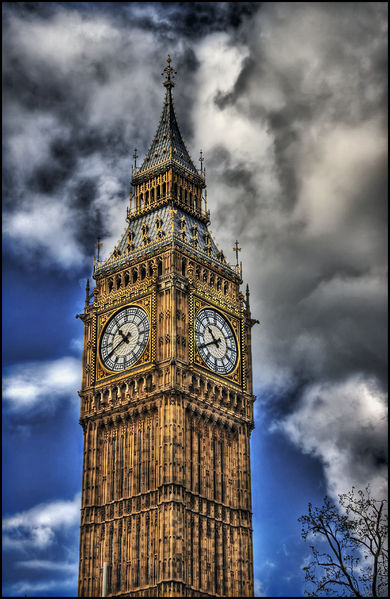Foreground plně podporuje – RWD, HTML 5.0, Super Galerii a YouTube 2.0 !
Soubor:Great Clock of Westminster-vgmFlickr.jpg
Z Multimediaexpo.cz

Velikost tohoto náhledu je: 390 × 599 pixelů
Obrázek ve vyšším rozlišení (rozměr: 2 238 × 3 438 pixelů, velikost souboru: 7,26 MB, MIME typ: image/jpeg)
Fotografie + English: Great Clock of Westminster ( Taken on April 28, 2008 )
- Explore: May 8, 2008. Thank you.
Another view, this time a daytime, handheld HDR version of the Clock Tower, often referred to as Big Ben. Some more information on the Great Clock of Westminster, courtesy of Wikipedia:
The tower was raised as a part of Charles Barry's design for a new palace, after the old Palace of Westminster was destroyed by fire on the night of 22 October 1834. However, although Barry was the chief architect of the palace, he turned to Augustus Pugin for the design of the clock tower, which resembles earlier Pugin designs, including one for Scarisbrick Hall. The design for the Clock Tower was Pugin's last design before his final descent into madness and death, and Pugin himself wrote, at the time of Barry's last visit to him to collect the drawings: "I never worked so hard in my life for Mr Barry for tomorrow I render all the designs for finishing his bell tower & it is beautiful." The tower is designed in Pugin's celebrated Gothic Revival style, and is 96.3 metres (315.9 ft) high.
The first 61 metres (200 ft) of the structure is the Clock Tower, consisting of brickwork with stone cladding; the remainder of the tower's height is a framed spire of cast iron. The tower is founded on a 15-metre (49 ft) square raft, made of 3-metre (9.8 ft) thick concrete, at a depth of 4 metres (13 ft) below ground level. The four clock faces are 55 metres (180 ft) above ground. The interior volume of the tower is 4,650 cubic metres (164,200 cubic feet).
Due to ground conditions present since construction, the tower leans slightly to the north-west, by roughly 220 millimetres (8.66 in) at the clock face, giving an inclination of approximately 1/250. Due to thermal effects it oscillates annually by a few millimetres east and west.
The main bell, officially known as the Great Bell, is the largest bell in the tower and part of the Great Clock of Westminster. The bell is better known by the nickname Big Ben, which is often mistakenly applied to the Clock Tower.
The idiom of putting a penny on, with the meaning of slowing down, sprang from the method of fine-tuning the clock's pendulum. The pendulum carries a small stack of old penny coins; adding or subtracting coins has the effect of minutely altering the position of the bob's centre of mass, the effective length of the pendulum rod and hence the rate at which the pendulum swings. Adding or removing a penny will change the clock's speed by 2/5th of one second per day.
- Author: vgm8383
+ pochází z Flickr.com , kde má status – Creative Commons Attribution-NonCommercial 2.0 Generic (CC BY-NC 2.0)
FLICKR -- https://www.flickr.com/photos/vgm8383/2475753548/
Historie souboru
Kliknutím na datum a čas se zobrazí tehdejší verze souboru.
| Datum a čas | Náhled | Rozměry | Uživatel | Komentář | |
|---|---|---|---|---|---|
| současná | 15. 5. 2017, 09:17 |  | 2 238×3 438 (7,26 MB) | Sysop (diskuse | příspěvky) | (Fotografie + + pochází z Wikimedia Commons, kde má status – Kategorie:CC fotografie) |
- Editovat tento soubor v externím programu (Více informací najdete v nápovědě pro nastavení.)
Odkazy na soubor
Na soubor odkazují tyto 3 stránky:
